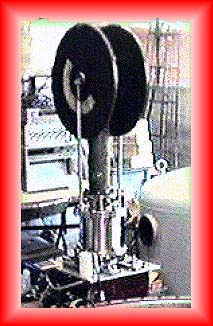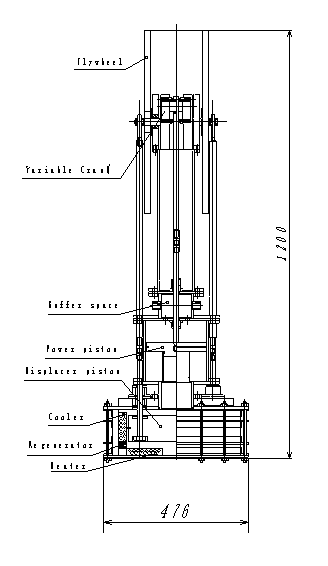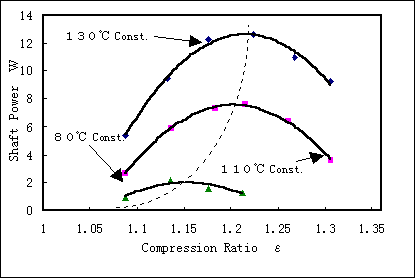
 Japanese
Japanese

 Object of development
Object of development
Stirling engine can be driven theoreticaiiy, even though it is a very small temperature difference of an only 1 deg C. And the engine use many energies are thrown away up to now (natural energy (hotly terrestrial heat, Onsen , etc) and exhaust heat that fuel results as burning ). 10 W class low temperature difference Stirling engine is desined and produced for using a comparative low temperature.
 Sequence of events of research development
Sequence of events of research development10 W class low temperature difference Stirling engine is used development about a fundamental characteristic of a low temperature difference Stirling engine. In the following it shows that the main result of research.
1. Influence of temperature ratio.
Shaft power is so high that temperature retio is small.
2. Influence of heat exchanger ( heater, regenerator, and cooler ).
Heater : plate Finn type , shell and tube type , Finn tube type is used.
Regenerator : material and a mesh number is changed.
Cooler : shell and tube type , Finn tube type is used.
3. Influence of buffer pressure.
Shaft power is so high that buffer pressure is small.
4. Influence of average pressure.
There is oputimum on engine inside average pressure.
5. Influence of phase difference.
There is oputimum on phase difference.
6. Influence of ratio compression.
There is oputimum on compression ratio.(because a large specification change of an engine does this experiment mainly.)

 Structure of the engine
Structure of the engine
10 W class low temperature difference Stirling engine is gamma type Stirling engine to have a power piston and a displacer piston. The gamma type Stirling engine is suitable for it, in case that it uses low temperature heat-source as greatly being able to take a heating area with respect to the structure.
A displacer piston becomes a rectangle with respect to structure. With a plate fin type (heater), shell and tube type, fin tube type, a heat exchanger changed it accompanied with research and development. About a heater in a plate fin type by means of an electric heat line, and in a shell and tube type and fin tube type by means of an heating fluid for ethylene glycole business. And a cooler uses water works.
In order to investigate a variation of compression ratio, power piston diameter is changed from 100 mm to 200 mm. And in order to change a compression ratio, variable crank is used to change a stroke.
 Specifications of the engine
Specifications of the engine| Engine type | Gamma type | |
|---|---|---|
| Power piston | Bore | 200(mm) |
| Stroke | 20Å`70(mm) | |
| Stroke Volume | 628.32Å`2199.11(cc) | |
| Displacer piston | Length*Width | 296(mm)*276(mm) |
| Stroke | 40(mm) | |
| Stroke Volume | 3267.84(cc) | |
| Heater and Cooler | Type | Shell and Tube(fin type) |
| Pipe diamater | 10(mm) | |
| Pipe length | 276(mm) | |
| Pipe number | 16*2 | |
| Regenerator | Type | Wire net(Brass) |
| Length*Width | 10(mm)*276(mm) | |
| Sheet number | 30*2 | |

 Engine performance
Engine performance Return to Stirling Engines of Saitama University
Return to Stirling Engines of Saitama University
 Return to Stirling Engiene Home Page Academic Edition
Return to Stirling Engiene Home Page Academic Edition